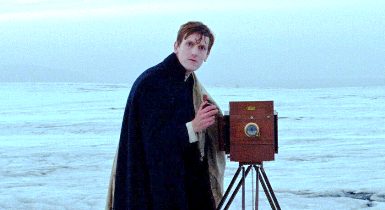 In the late 19th century, a Danish Lutheran priest is sent to Iceland to build a church, but the overwhelming power of nature threatens to destroy his plans.
In the late 19th century, a Danish Lutheran priest is sent to Iceland to build a church, but the overwhelming power of nature threatens to destroy his plans.
Godland is a film by the Icelandic writer and director Hlynur Pálmason. The original title in the Icelandic language indicates that the land has been corrupted in a cosmic sense—the English title Godland makes a finer point, that the God of the land, in other words nature, is radically different from the God of the church. This dramatic opposition is depicted through the experiences of a young Danish Lutheran priest in the late 19th century named Lucas, and played by Elliott Crosset Hove. Lucas is assigned by his church elder to travel to Iceland, which was still a Danish colony at the time, and build a church there for a small community on the west side of that island.
Lucas decides to land on the southeast part of Iceland and travel by horseback, with the help of some Icelandic guides, across the mountains to his destination on the western part. Along with his bible, a large crucifix for the church, and other supplies, Lucas brings a camera. His ambition is to make a photographic record of his travels in the country, and his companions. At that time, cameras were still large and unwieldy, and the process of taking photos was elaborate. This photography motif runs throughout the film as a metaphor for the detached observation practiced by the priest. Lucas acts aloof from everyone, withdrawn into his lonely religious dedication. He is further handicapped by only knowing Danish, having no familiarity with the language of Iceland. Only one of the guides knows Danish, and so he is dependent on him to communicate with the others.
The chief guide and head of the expedition is Ragnar, played by Ingvar Sigurðsson. He’s a tough old man who knows the rugged land and how to survive in it. He looks down on Lucas, the priest, with distrust and a not-so-well disguised contempt. As it turns out, Lucas has underestimated the difficulties involved in the journey. The expedition slowly plods across a barren wilderness of rocks and hills, enduring ever-increasing cold and snowfall. So long and arduous is the ordeal, that Lucas has a mental breakdown. His faith has not prepared him for this level of suffering.
The breathtaking photography in this picture conveys both the beauty and harshness of Iceland’s landscape. I don’t think I’ve ever seen another movie that so effectively recreates the long, long hours that make up such a wilderness expedition. Lucas does reach his goal, although he’s almost half dead when he arrives, and then the story concerns the rural village in which the church is built and he assumes the role of the local priest. The trouble is that the journey has changed him. His confidence has given way to fear and suspicion. The village’s head family hosts him there, and there are two daughters, the older of whom he starts to consider as a possible wife. But his instability becomes evident, and his isolation by temperament and language always works against his interest. The old guide, Ragnar, is staying there as well, and along with his difficulty in relating to the priest there is a strange desire to learn how to be religious himself, something that Lucas has lost and is unable to teach.
Godland is a film of stark forbidding beauty. We experience an overwhelming feeling of awe, too great and too terrifying for the simple young man with his simple faith to take in.

Paul Thomas Anderson pays humorous tribute to the 1970s in southern California in this story of a teenage entrepreneur who falls for a clever...

The great Agnes Varda collaborates with photographer JR on a project in which they travel around rural France taking pictures of people, blowing them...

Charlie Kaufman’s latest mindbender tells the story of a young couple on a voyage, a strange trip into the uncertainty of self and other....